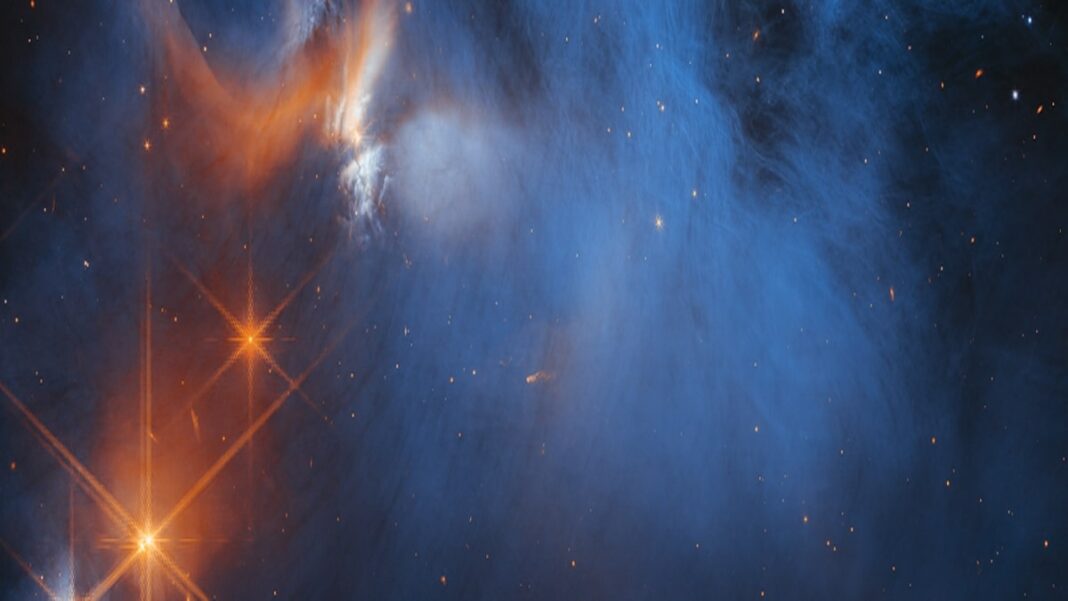UNITED STATES: A molecular cloud 630 light years away was examined by NASA’s powerful James Webb Space Telescope. Recently, ices consisting of several elements were also discovered by Webb.
James Webb’s new image features Chameleon 1 cloud
According to a press statement, Methane, sulphur, nitrogen, and ethanol were detected in the Chameleon 1 cloud, one of the darkest and coldest regions ever discovered.
NASA published a previously unseen image of the frosty cloud on Instagram. It captioned the picture with, “Because of how chilly and black this molecular cloud is, many molecules, not just water, have actually frozen to the dust particles inside of it.“
“With its data, Webb proves for the first time that molecules more complicated than methanol (CH3OH) can form in the cold depths of molecular clouds prior to star formation, ” the caption further read.
Hydrogen and carbon monoxide can originate in molecular clouds, which are interstellar collections of gas and dust. Protostars, which are young stars, can be created when dense groups within these clouds collapse.
An international team of experts analysed the freezing molecular cloud and found water ice, frozen ammonia, methanol, methane, and carbonyl sulphide inside.
The most recent data, according to the experts, will allow scientists to determine how much of each component goes into the formation of new planets and how habitable the planet will be because these elements are essential for life.
According to lead study author Melissa McClure, an astronomer and assistant professor at Leiden Observatory in the Netherlands, “our results provide insights into the initial, dark chemistry stage of the formation of ice on the interstellar dust grains that will grow into the centimeter-sized pebbles from which planets form in discs.” For the observation programme, McClure is in charge of all research.
According to the press release, “These observations give a fresh window into the formation paths for the simple and complex molecules that are needed to produce the building blocks of life.”
The researchers also disclosed that James Webb was able to find signs of so-called “prebiotic compounds” in the cloud. It just alludes to particular substances that are understood to promote favourable circumstances for life’s earliest forms.
“Our discovery of complex organic molecules, such as methanol and possibly ethanol, also indicates that the numerous star and planet systems forming in this specific cloud will inherit molecules in a fairly advanced chemical state,” according to Will Rocha, an astronomer at Leiden Observatory who contributed to the discovery.
This may imply that the existence of primordial chemicals in planetary systems is a typical byproduct of star creation rather than a peculiarity of our own Solar System.
In order to identify the components and look for chemical signatures, NASA astronomers used starlight that was filtered through the cloud.
Also Read: SpaceX Successfully Launches Its First 2023 Mission



